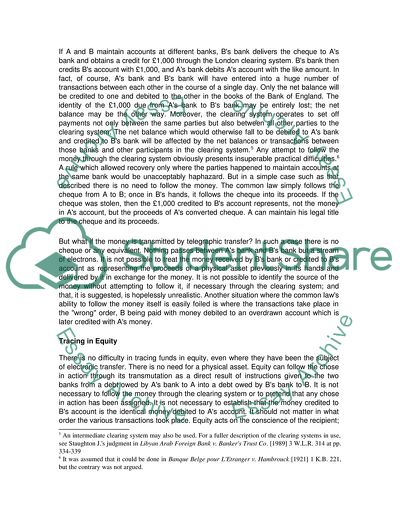Cite this document
(Tracing in Common Law Essay Example | Topics and Well Written Essays - 1500 words, n.d.)
Tracing in Common Law Essay Example | Topics and Well Written Essays - 1500 words. https://studentshare.org/law/1703472-discuss-the-limitations-of-the-tracing-rules-both-in-common-law-and-in-equity-with-reference-to-decided-cases-and-critically-evaluate-the-debate-about-the-devel
Tracing in Common Law Essay Example | Topics and Well Written Essays - 1500 words. https://studentshare.org/law/1703472-discuss-the-limitations-of-the-tracing-rules-both-in-common-law-and-in-equity-with-reference-to-decided-cases-and-critically-evaluate-the-debate-about-the-devel
(Tracing in Common Law Essay Example | Topics and Well Written Essays - 1500 Words)
Tracing in Common Law Essay Example | Topics and Well Written Essays - 1500 Words. https://studentshare.org/law/1703472-discuss-the-limitations-of-the-tracing-rules-both-in-common-law-and-in-equity-with-reference-to-decided-cases-and-critically-evaluate-the-debate-about-the-devel.
Tracing in Common Law Essay Example | Topics and Well Written Essays - 1500 Words. https://studentshare.org/law/1703472-discuss-the-limitations-of-the-tracing-rules-both-in-common-law-and-in-equity-with-reference-to-decided-cases-and-critically-evaluate-the-debate-about-the-devel.
“Tracing in Common Law Essay Example | Topics and Well Written Essays - 1500 Words”. https://studentshare.org/law/1703472-discuss-the-limitations-of-the-tracing-rules-both-in-common-law-and-in-equity-with-reference-to-decided-cases-and-critically-evaluate-the-debate-about-the-devel.


